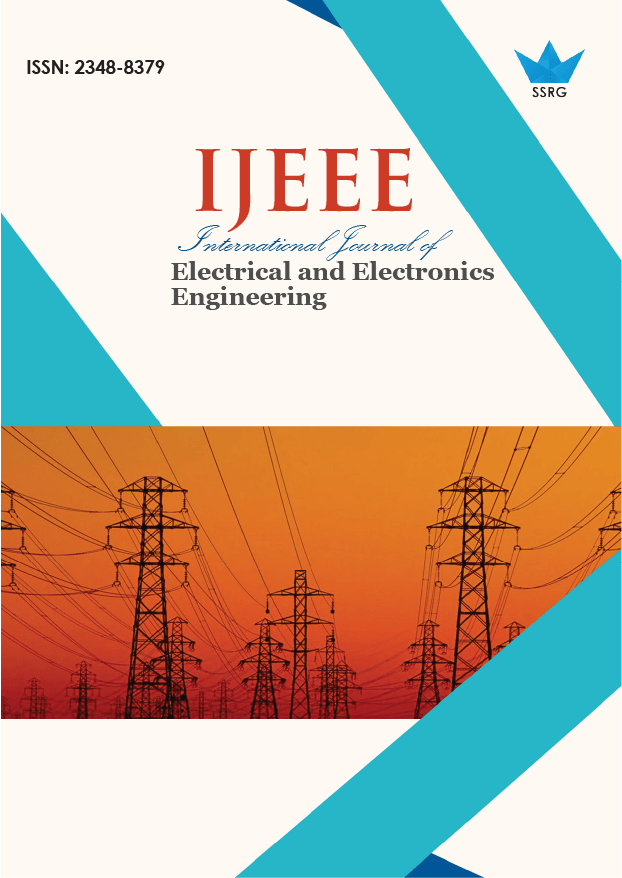Morphological and Syntactic Challenges in Malayalam: A Dependency Parsing Perspective

| International Journal of Electrical and Electronics Engineering |
| © 2024 by SSRG - IJEEE Journal |
| Volume 11 Issue 12 |
| Year of Publication : 2024 |
| Authors : P.V. Ajusha, A.P. Ajees |
How to Cite?
P.V. Ajusha, A.P. Ajees, "Morphological and Syntactic Challenges in Malayalam: A Dependency Parsing Perspective," SSRG International Journal of Electrical and Electronics Engineering, vol. 11, no. 12, pp. 375-385, 2024. Crossref, https://doi.org/10.14445/23488379/IJEEE-V11I12P134
Abstract:
Natural language processing is the area of study that focuses on how computers and human languages interact. Machine translation, sentiment analysis, semantic analysis, and text analysis are a few of them. The key natural language processing component is morphological analysis, which breaks words into their corresponding morphemes to determine their structure and meaning. Dependency parsing algorithms use morphological information to determine the syntactic structure of a sentence. This study evaluates the performance of various parsers, including Turbo parser, Lys-FASTPARSE, UU parser, and neural network based parser, to analyse dependency parsing methodologies used in the Malayalam language. The study evaluates the performance of these parsers in handling the difficulties and effectiveness of extensive morphological and syntactic features of Malayalam. Among these parsers, Lys-FASTPARSE performs better in LAS F1 score, MLAS score, and BLEX score, maintaining values of 56.60 and 48.58 before and after optimization. The neural network parser shows minor improvements in unlabelled attachment scores from 0.72 to 0.73 and labelled attachment scores from 0.46 to 0.47. With an LAS of 66.89% and UAS of 87.12%, the Turbo parser shows better results for baseline performance. The precision of 98.81% and recall of 88.42% in binned HEAD directions of the UU parser shows its performance in managing right direction dependencies. While lower, the parser's performance in managing left-direction and root dependencies still reflects its ability to navigate complex syntactic structures effectively. The results underscore the significance of tailored parsing techniques for morphologically rich languages like Malayalam and provide insights into optimizing parser performance for improved syntactic analysis.
Keywords:
Neural network-based parser, Dependency parsing, Lys-FAST parser, UU parser, Transition based parsing.
References:
[1] Sandra Kübler, Ryan McDonald, and Joakim Nivre, Dependency Parsing, Synthesis Lectures on Human Language Technologies, Springer, pp. 11-20, 2009.
[CrossRef] [Google Scholar] [Publisher Link]
[2] Carlos Gómez-Rodríguez, John Carroll, and David Weir, “Dependency Parsing Schemata and Mildly Non-Projective Dependency Parsing,” Computational Linguistics, vol. 37, no. 3, pp. 541-586, 2011.
[CrossRef] [Google Scholar] [Publisher Link]
[3] David Vilares, and Carlos Gómez-Rodríguez, “A Non-Projective Greedy Dependency Parser with Bidirectional Lstm,” arXiv, 2017.
[CrossRef] [Google Scholar] [Publisher Link]
[4] Daniel Hershcovich, Universal Semantic Parsing with Neural Networks, Ph.D. Thesis, Hebrew University, pp. 1-288, 2019.
[Google Scholar] [Publisher Link]
[5] Dat Quoc Nguyen, and Karin Verspoor, “From POS Tagging to Dependency Parsing for Biomedical Event Extraction,” BMC Bioinformatics, vol. 20, pp. 1-13, 2019.
[CrossRef] [Google Scholar] [Publisher Link]
[6] B. Premjith et al., “Embedding Linguistic Features in Word Embedding for Preposition Sense Disambiguation in English—Malayalam Machine Translation Context,” Recent Advances in Computational Intelligence,” Springer, pp. 341-370, 2019.
[CrossRef] [Google Scholar] [Publisher Link]
[7] R.M. Nayana, R.R. Rajeev, and C. Naseer, “Dependency Parser for Malayalam: A Machine Learning Approach,” 2018 International CET Conference on Control, Communication, and Computing (IC4), Thiruvananthapuram, India, pp. 394-398, 2018.
[CrossRef] [Google Scholar] [Publisher Link]
[8] T. Aparnna, P.G. Raji, and K.P. Soman, “Integer Linear Programming Approach to Dependency Parsing for Malayalam,” 2010 International Conference on Recent Trends in Information, Telecommunication and Computing, Kerala, India, pp. 324-326, 2010.
[CrossRef] [Google Scholar] [Publisher Link]
[9] K. Krishnakumar, S. Rajendran, and N. Rajendran, “Subject and Object Identification in Malayalam Using Machine Learning Approach,” IJDL International Journal of Dravidian Linguistics, vol. 42, no. 1, pp. 36-66, 2013.
[Google Scholar] [Publisher Link]
[10] Sally Mohamed Ali El-Morsy, Mahmoud Hussein, and Hamdy M. Mousa, “Arabic Open Information Extraction System Using Dependency Parsing,” International Journal of Electrical and Computer Engineering (IJECE), vol. 12, no. 1, pp. 541-551, 2022.
[CrossRef] [Google Scholar] [Publisher Link]
[11] Sharefah Al-Ghamdi, Hend Al-Khalifa, and Abdulmalik Al-Salman, “A Dependency Treebank for Classical Arabic Poetry,” Proceedings of the Sixth International Conference on Dependency Linguistics, (Depling, SyntaxFest 2021), pp. 1-9, 2021.
[Google Scholar] [Publisher Link]
[12] HDana Halabi, Arafat Awajan, and Ebaa Fayyoumi, “Improving Arabic Dependency Parsers by using Dependency Relations,” 2020 21st International Arab Conference on Information Technology (ACIT), Giza, Egypt, pp. 1-7, 2020.
[CrossRef] [Google Scholar] [Publisher Link]
[13] Ran Zmigrod, Tim Vieira, and, Ryan Cotterell, “Please Mind the Root: Decoding Arborescences for Dependency Parsing,” arXiv, 2020.
[CrossRef] [Google Scholar] [Publisher Link]
[14] Janos Zsibrita, Veronika Vincze, and Richard Farkas, “Magyarlanc: A Tool for Morphological and Dependency Parsing of Hungarian,” Proceedings of Recent Advances in Natural Language Processing, Hissar, Bulgaria, pp. 763-771, 2013.
[Google Scholar] [Publisher Link]
[15] Diego Alves, Boke Bekavac, and Marko Tadić, “Typological Approach to Improve Dependency Parsing for Croatian Language,” Proceedings of the 20th International Workshop on Treebanks and Linguistic Theories, pp. 1-11, 2021.
[Google Scholar] [Publisher Link]
[16] Malayalam Treebank Data_IIITH, TDIL, GoTranslate Web Localizer, 2018. [Online]. Available: https://tdil-dc.in/index.php?option=com_download&task=showresourceDetails&toolid=1980&lang=en

 10.14445/23488379/IJEEE-V11I12P134
10.14445/23488379/IJEEE-V11I12P134